Fellowship Profile Series 3: Kerri Brown, 2015 Urban Ethnobiology Research Fellow
Fellowship Profile Series 3: Kerri Brown, 2015 Urban Ethnobiology Research Fellow
Starting in 2015, the Society of Ethnobiology began supporting three graduate research fellowships. This series includes short essays profiling the research by each of the fellows during the year that they received funding
Kerri Brown, 2015 Urban Ethnobiology Research Fellow
Words: Kerri Brown
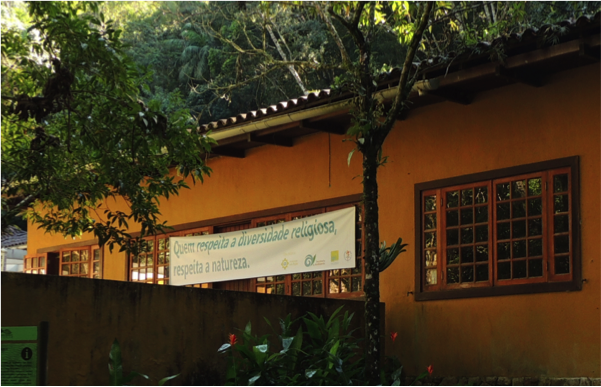 Over the past year since receiving the Society of Ethnobiology’s Urban Ethnobiology Fellowship, I have been conducting data analysis on six months of preliminary ethnographic research, as well as conducting an analysis of policies, in preparation for long-term fieldwork beginning in January 2016. My overarching research topic has been the effect of medicinal plant policies on Afro-Brazilian communities, and specifically how communities themselves have actively responded to and interpreted such government involvement in their use of medicinal plants.
Over the past year since receiving the Society of Ethnobiology’s Urban Ethnobiology Fellowship, I have been conducting data analysis on six months of preliminary ethnographic research, as well as conducting an analysis of policies, in preparation for long-term fieldwork beginning in January 2016. My overarching research topic has been the effect of medicinal plant policies on Afro-Brazilian communities, and specifically how communities themselves have actively responded to and interpreted such government involvement in their use of medicinal plants.
I’ve begun my analysis by examining discussions of Afro-Brazilian populations within recently implemented health, environmental, and medicinal plant/phytotherapeutic policies. Collectively these policies’ goals are to preserve traditional knowledge, promote biodiversity, increase access to healthcare, and make healthcare more culturally inclusive. Rio de Janeiro provides a rich environment for exploring these shifting ways of thinking politically about medicinal plants. Fiocruz, Brazil’s national biomedical research agency and one of the main actors in the integration of medicinal plants into the national healthcare system, is headquartered in Rio. Individuals from across society in Rio use, exchange, cultivate, and collect medicinal plants in a variety of spaces throughout the metropolitan area, including forested areas within and surrounding the city, local markets, home gardens, pharmacies, clinics, natural food stores, and religious spaces. The use of medicinal plants in each space is governed by different laws and policies and is characterized by different cultural meanings.
Political conversations in the metropolitan area of Rio de Janeiro, which has a population of over 12 million inhabitants, are lively and tense as diverse groups work to construct collective identities and articulate their demands to the government. For my preliminary research, I chose to focus on two main communities in the Rio de Janeiro metropolitan area. My research focused as much on Rio’s metropolitan periphery as it did on Rio itself. Peripheral municipalities are essential to political conversations, as they often struggle with limited access to health care, poverty, and infrastructural issues. I wanted to understand, broadly, how policy, inequality, and medicinal plants intersected within each community, and I attended workshops, meetings, and public performances, and conducted unstructured interviews in each community. I had two main research objectives: 1) To gain an understanding of which plants are most frequently used, which ailments are of most concern to communities, and the cultural meanings surrounding medicinal plants; and 2) To identify the ways that communities’ use and exchange of medicinal plants connect to broader struggles for equality and rights.
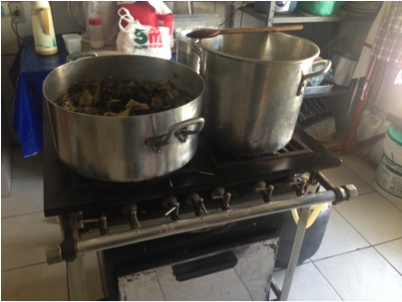 The first community included women involved in a phytotherapeutic pharmacy operated out of a church in the municipality of Belford Roxo. Several recent health policies and programs, especially those aimed at combatting racial inequality, have been implemented in Belford Roxo. Neighborhood residents bring plants collected from around the city to the pharmacy, where a staff of five women create phytotherapeutics, soaps, pomades, and other products to sell back to the community at little to no cost. The pharmacy also holds educational workshops led by staff and invited scholars. The pharmacy’s shelves were lined with syrups and tinctures with labels such as “liver,” “ear,” and “throat.” On the opposite side of the pharmacy were bags of dried plants such as orange leaves, ironweed, and knotweed.
The first community included women involved in a phytotherapeutic pharmacy operated out of a church in the municipality of Belford Roxo. Several recent health policies and programs, especially those aimed at combatting racial inequality, have been implemented in Belford Roxo. Neighborhood residents bring plants collected from around the city to the pharmacy, where a staff of five women create phytotherapeutics, soaps, pomades, and other products to sell back to the community at little to no cost. The pharmacy also holds educational workshops led by staff and invited scholars. The pharmacy’s shelves were lined with syrups and tinctures with labels such as “liver,” “ear,” and “throat.” On the opposite side of the pharmacy were bags of dried plants such as orange leaves, ironweed, and knotweed.
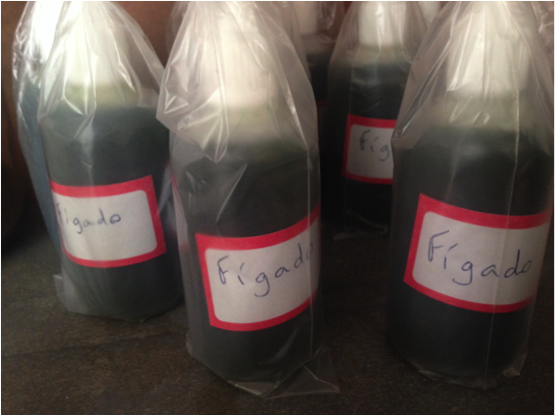 As access to healthcare has historically been limited in Belford Roxo, the pharmacy has provided much-needed care and resources to residents. The pharmacy has been in existence for 15 years, six years longer than Brazil’s National Policy of Medicinal Plants and Phytotherapeutics, and six years longer than Brazil’s Farmácia Popular program, which has made commonly used pharmaceuticals more accessible in Belford Roxo and throughout the nation. The pharmacy, part of a larger network of phytotherapeutic pharmacies throughout the state of Rio de Janeiro, also prides itself in maintaining cultural and ethnic aspects of the community’s knowledge of medicinal plants. The group mentioned, in fact, that both the Ministry of Health and the Ministry of Culture have been supportive of their operations.
As access to healthcare has historically been limited in Belford Roxo, the pharmacy has provided much-needed care and resources to residents. The pharmacy has been in existence for 15 years, six years longer than Brazil’s National Policy of Medicinal Plants and Phytotherapeutics, and six years longer than Brazil’s Farmácia Popular program, which has made commonly used pharmaceuticals more accessible in Belford Roxo and throughout the nation. The pharmacy, part of a larger network of phytotherapeutic pharmacies throughout the state of Rio de Janeiro, also prides itself in maintaining cultural and ethnic aspects of the community’s knowledge of medicinal plants. The group mentioned, in fact, that both the Ministry of Health and the Ministry of Culture have been supportive of their operations.
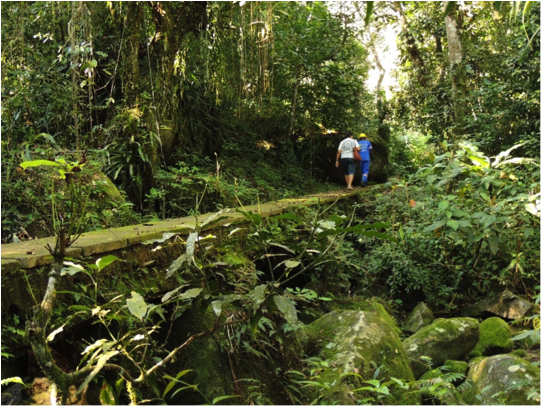 The second community that I conducted research among included practitioners of the Afro-Brazilian religion candomblé, who have increasingly been active in politics surrounding health care in Rio de Janeiro. Since the religion’s pharmacopeia has spanned centuries in Brazil and has even deeper roots in West Africa, I wanted to explore how activist practitioners have been in conversation with recent policies stemming from the government’s more biomedical framework of healthcare. I attended workshops and public performances held by two politically active terreiros (religious houses) in Nova Iguaçu and Magé, municipalities on the outskirts of Rio. In order to gain a sense of how plants are used in terreiros, I conducted a walk-in-the-woods interview with a member of the terreiro in Magé in a nearby forested area, as well as informal interviews at the terreiro itself. Workshops and performances were held both in these municipalities and in central parts of Rio, allowing for wider audiences to be reached.
The second community that I conducted research among included practitioners of the Afro-Brazilian religion candomblé, who have increasingly been active in politics surrounding health care in Rio de Janeiro. Since the religion’s pharmacopeia has spanned centuries in Brazil and has even deeper roots in West Africa, I wanted to explore how activist practitioners have been in conversation with recent policies stemming from the government’s more biomedical framework of healthcare. I attended workshops and public performances held by two politically active terreiros (religious houses) in Nova Iguaçu and Magé, municipalities on the outskirts of Rio. In order to gain a sense of how plants are used in terreiros, I conducted a walk-in-the-woods interview with a member of the terreiro in Magé in a nearby forested area, as well as informal interviews at the terreiro itself. Workshops and performances were held both in these municipalities and in central parts of Rio, allowing for wider audiences to be reached.
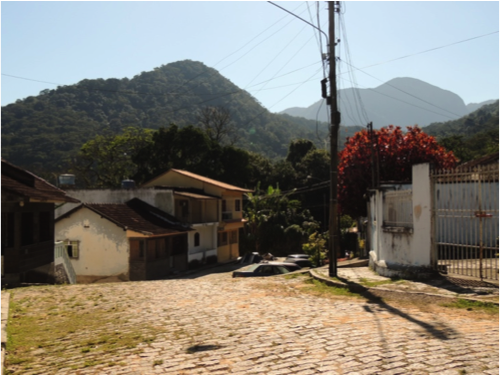 One workshop I attended, held by the terreiro in Nova Iguaçu, was in Tijuca National Park, located within the Atlantic Forest in the center of Rio. Candomblé practitioners spoke about the health benefits of several plants to a crowd of around 100 attendees, emphasizing that the plants could be used for everyday health needs and not just for religious purposes. At the end of the workshop, the candomblé practitioners presented an online petition in support of the conservation of natural resources, as the religion relies heavily on water and plants for symbolic, ceremonial, and healing purposes. At a later public ceremony held by the same terreiro, candomblé practitioners who are also biomedical healthcare providers passed out brochures with information about Afro-Brazilian health policies. Practitioners were not only enthusiastic about sharing their knowledge of plants, but were also active in bridging knowledge systems, shaping policies, and informing communities about policies.
One workshop I attended, held by the terreiro in Nova Iguaçu, was in Tijuca National Park, located within the Atlantic Forest in the center of Rio. Candomblé practitioners spoke about the health benefits of several plants to a crowd of around 100 attendees, emphasizing that the plants could be used for everyday health needs and not just for religious purposes. At the end of the workshop, the candomblé practitioners presented an online petition in support of the conservation of natural resources, as the religion relies heavily on water and plants for symbolic, ceremonial, and healing purposes. At a later public ceremony held by the same terreiro, candomblé practitioners who are also biomedical healthcare providers passed out brochures with information about Afro-Brazilian health policies. Practitioners were not only enthusiastic about sharing their knowledge of plants, but were also active in bridging knowledge systems, shaping policies, and informing communities about policies.
The two communities that I conducted research among actively and politically integrated their reliance upon medicinal plants into ideas about urban development, rights, and cultural preservation. In both communities, medicinal plants serve the concrete, basic needs of health care. Many of the same plants were mentioned across the two communities, and chronic ailments such diabetes, digestive issues, and women’s health issues, among others, were frequently treated using medicinal plants. However, medicinal plants serve different social and political purposes in each community, depending in part on which policies in particular have most affected the community.
My project has evolved into a comparative study of urban and rural use of medicinal plants among African diasporic populations in Brazil. I will conduct 9 months of ethnographic research in the Rio de Janeiro metropolitan area, and 9 months of ethnographic research in the Amazonian state of Pará. In my upcoming long-term fieldwork, I hope to further and more systematically delve into examining which policies are most prevalent within the communities, as well as question how knowledge of medicinal plants may be shifting because of the presence of such policies. I’d like to thank the Society of Ethnobiology for supporting the initial phase of my research, and for calling attention to ethnobotanical issues specific to urban areas.

Comments (1)